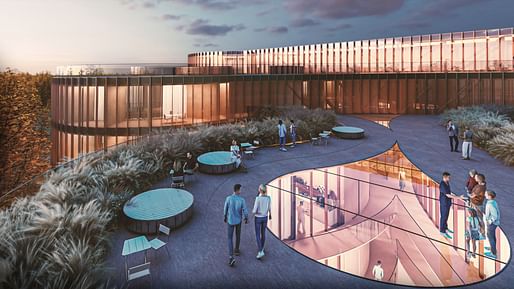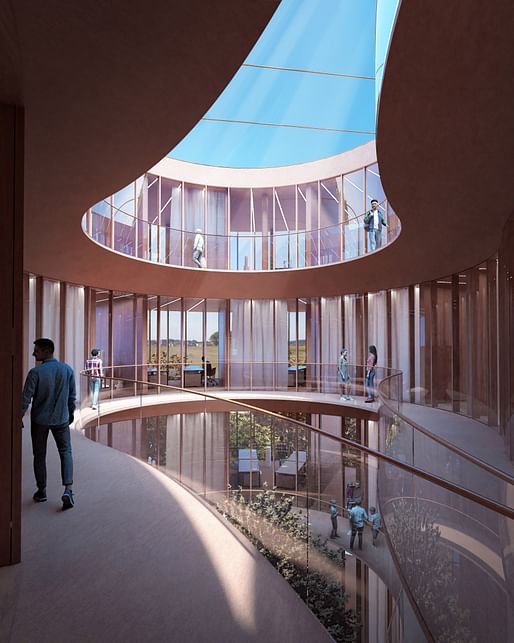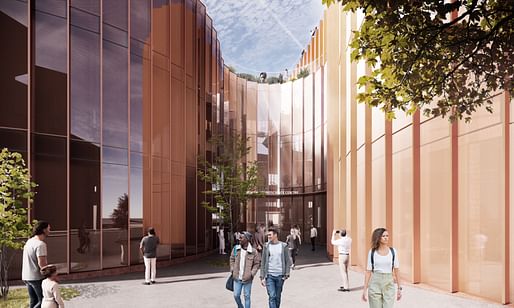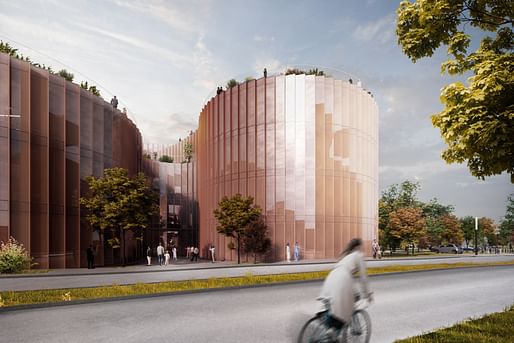
Bjarke Ingels Group has unveiled its design for a neuroscience center in Aarhus, Denmark. Described by the studio as “the first of its kind in the world,” the 19,000-square-meter (200,000-square-foot) facility will be used by Aarhus University Hospital to study and treat physical and mental brain diseases.

Spread across six levels, the center’s floor plan “folds” around a collection of atria echoing the folds of the cerebral cortex, creating a series of small clusters and courtyards. The ground floor sees patients and guests enter through a large open atrium at the core of the building, which also contains an interactive public exhibition area, café, and public courtyard.

While the building will host several distinct departments including neurology, nuclear medicine, and psychiatry, each with their own unique requirements, the floorplan has been arranged to allow common functions to act as “crossbreeding” elements. In addition to encouraging collaboration and dialogue between the disciplines, these interdepartmental spaces also form part of the building’s futureproofing strategy.

“The brain is the most complex organ in the human body,” said Bjarke Ingels on the scheme’s unveiling. “Our design for the new Danish Neuroscience Center in Aarhus, replicates the most essential feature of the brain — the gyrification — to create more connections and space within limited confines. The building folds bring light, lots of new pathways and green pockets into the hospital making nature and biodiversity part of the hospital’s research and the healing journey of its patients.”

Externally, the building is clad in timber, brick, and red concrete to assimilate with the campus' surrounding brick buildings. Every floor will have access to an outdoor terrace, while stretched metal window mesh prevents the workspaces and labs from being affected by glare or excessive natural sunlight.

News of the building comes weeks after BIG unveiled its design for ‘Viceverse,’ Vice’s new virtual headquarters for the Decentraland platform. The firm has also recently unveiled plans for a $600 million film studio with Robert De Niro in New York, and a cybersecurity and AI hub in Slovakia.
Late last year, the firm’s founder Bjarke Ingels offered a first insight into Nabr, his disruptor housing company which proposes a new financial and production model for affordable housing.

6 Comments
LMAO those diagrams
Was just comparing this project to the work of this year's Pritzker winner. I hate everything about what BIG has turned into. Those diagrams speak volumes about nothing at all.
Yeah, BIG is a big firm these days - larger than KPF and offering full AE services like SOM. They're pretty much competing with SOM and other multinational acronyms rather than their European hip cousins like MVRDV, whose ranks BIG have left some time ago.
The brain connection is a bit on the nose, but it is also pretty smart. The diagrams explain how smart it is, not much more. Personally I dont think it is necessary to hate BIG's output just because I love Kere's work. They are different, though if we are honest not all that different. Both try to find the positive in a difficult problem and both avoid the obvious lowest denominator solution in favor of human-scaled qualities.
If you find that BIG is presenting "human-scaled qualities" in their work, I don't think I can agree even 1%. I find it to be the exact opposite - scaleless, cold, architecture-as-diagram nonsense.
While the building will host several distinct departments including neurology, nuclear medicine, and psychiatry, each with their own unique requirements, the floorplan has been arranged to allow common functions to act as “crossbreeding” elements.
Looks like they're crossbreedin'.
Block this user
Are you sure you want to block this user and hide all related comments throughout the site?
Archinect
This is your first comment on Archinect. Your comment will be visible once approved.